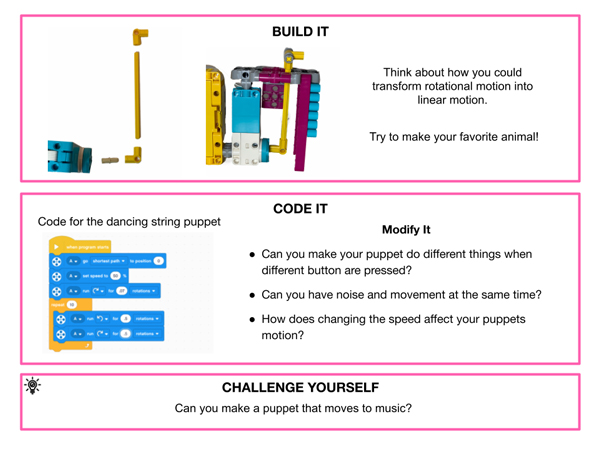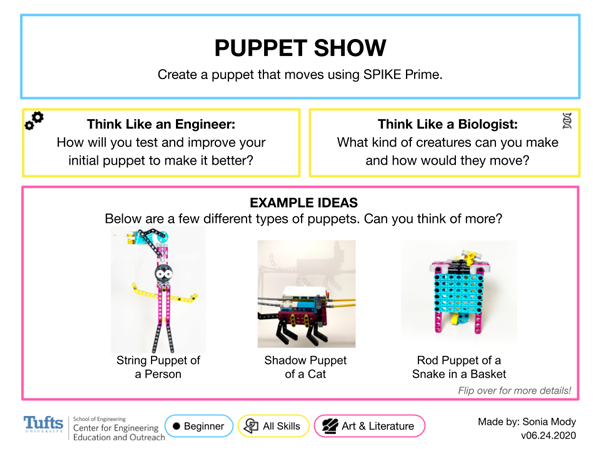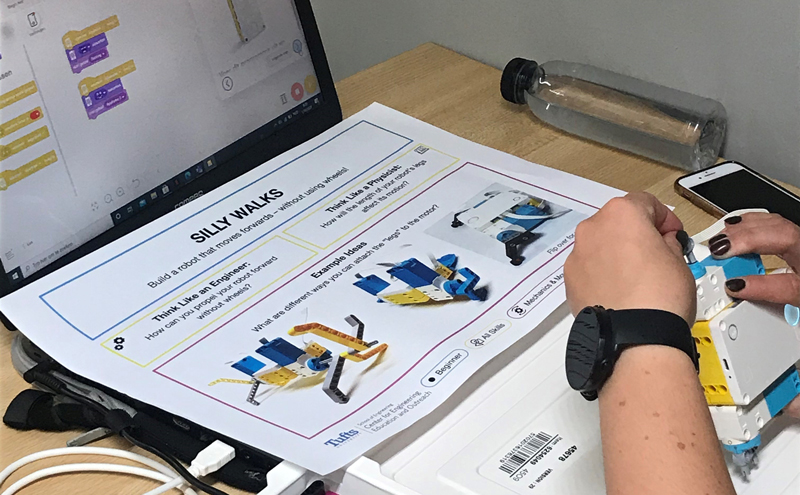Just as an instructional manual is like a booklet that gives specifications and guides the user about a product and how to make it work efficiently, Lego® Education has put together Placement Instructions for the sake of supporting educators & students.
A Placement Instruction is like a one-page brief guide for all your design queries to make the LEGO® Education project less challenging and more fun.
The guide is systematically compiled by experts to offer multiple ways of scaffolding students & teachers to participate seamlessly in activities.
The method of instruction is broken down into five zones; title zone, example zone, building zone, coding zone, and extension zone.
Title Zone: It instructs students to recollect knowledge about STEM topics and apply it to construct engineering design solutions.
Example Zone: Here the LEGO® users in schools across Dubai & other regions of the UAE, are presented with different options from which one example results in the final solution. However, it’s like a hint given to a puzzle, without giving the correct answer. Children are free to go on a treasure hunt, like an adventure, and map their way through the solution.
Building Zone: This template goes more into detail and displays imagery to further assist students to replicate an existing build by using different strategies.
Coding Zone: Novice coders may struggle to formulate certain codes and thus the coding zone is specially designed to provide some assistance to them. It teaches tech enthusiasts to try out & experiment with different codes and shares ideas to help start the process with some tips & tricks.
Extension Zone: Once the first part of the challenge is completed, the extension zone indicates the next stage of how to proceed further and complete the task.


Placement Instructions Supports The Teaching Faculty:
#1 Reduces Preparation on Introduction of topic:
Imagine the excitement on your student’s face when he sees colorful elements of LEGO® Education SPIKE™ Prime ready to be unboxed. They can’t wait to start building & experimenting with their LEGO® sets and it seems rather difficult to stay calm and listen to the teacher give instructions patiently. Moreover, some students are unable to grasp the gist at the first go, and therefore, the placement instruction works best in this scenario. Children can read and re-read the instructions to fully absorb the activity before they get started and it also saves the educator some time of having to prepare a summary of the LEGO® experiment in advance. Some of the most popular kits like the; LEGO® Education BricQ Motion and SPIKE™ Essential Set, are easily available in GCC regions.
#2 Gives Students the benefit of Learning According to their Comfort Level
Not all students are scholars or inclined towards techie activities. Some may take time, fail to crack the instructions & even fumble a few times. But that’s all a process of learning. Each learner should be given the entitlement of being comfortable with the process and thus most schools in the Middle East that provide LEGO® Education Kits make sure each participant is handed over a copy of the placement instructions. A middle school science teacher shared the following from her experience, “My kids had not done a lot of building … the placemats were actually…really helpful because I felt like I had …some kids who were just still struggling with the real basics. And then I had other kids who had a sense of gears…and the placemat helped all those different kids come at it at different levels. I think also, it…gave them some privacy.”
#3 Less stress dealing with queries and too many questions from students
Anything that is done for the first time may give the student a bit of a blank expression on their face! What? How? When? Where? Are common questions that teachers have to deal with in classrooms while getting the LEGO® projects executed within the 45 mins to 1-hour time frame. It could get overwhelming for the teacher to single-handedly attend to queries of 30 students at a time. The placement instruction acts as a savior by covering the minutest of details & solving doubts that students may have. The teacher can then just point to the paragraph where the instruction is mentioned, and ask students to read it by themselves. This method also fosters independence and self-confidence in children.

